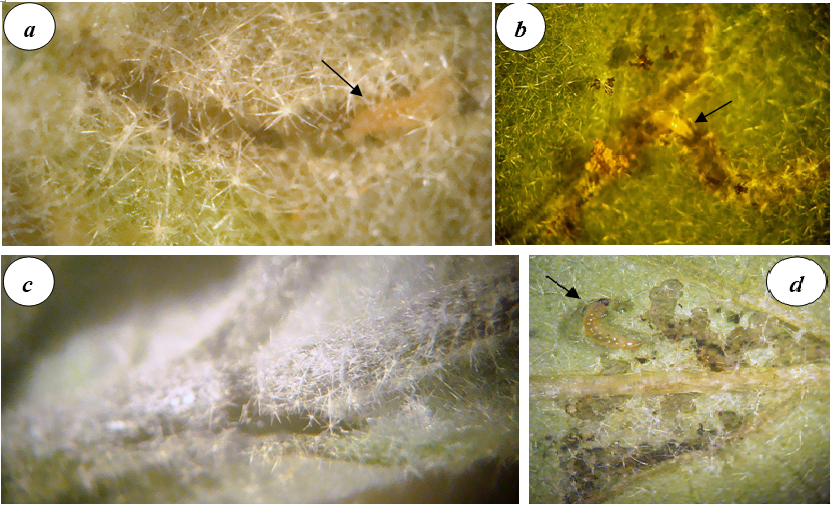P-ISSN: 2349-6800, E-ISSN: 2320-7078
Journal of Entomology and Zoology Studies
2014, Vol. 2, Issue 6
Why is management of brinjal shoot and fruit borer, Leucinodes orbonalis Guenee, difficult? an examination into the pest’s unique feeding behavioral biology
Vageeshbabu S. Hanur, K. Boopal, Vijeth V. Arya, K. N. Srividya, M. S. Saraswathi
Brinjal is the second highest consumed vegetable in India, produced with a yield of 8-9 million tons annually. Leucinodes orbonalis Guenee (Lepidoptera: Crambidae) commonly called brinjal shoot and fruit borer (BSFB) being a major pest of brinjal causes heavy loss to the crop productivity. The inadequate information about the special feeding behavior of BSFB has led to its management challenging and difficult. The present study was taken up to report the unique feeding behavior of BSFB. Freshly hatched first instar neonate larvae of BSFB were released on different reproductive parts of brinjal as a host plant. Details of feeding behavioral dynamics were studied by cross-examining individual larval feeding. Three feeding behavioral patterns viz., “homing†“vein tunneling†and “compel feeding†were found to be key factor of initial stages of host-insect larval interactions that represent one of the weakest links in the developmental cycle of BSFB and that will be useful in the strategic development of effective pesticides.

Fig. 1: Vein tunneling and feeding behaviour of brinjal shoot and fruit borer, L. orbonalis. a, Extensive feeding of leaf lamellar tissue. b, Homing in onto veins by the first instar young larva and initiation of vein tunneling. c, Fully cross-cut leaf midrib due to feeding and homing. d, Close up of the insect larva extensively feeding in the region of junction of leaf lamella and veins (arrow indicates larval position).
Pages : 257-260 | 1632 Views | 113 Downloads
How to cite this article:
Vageeshbabu S. Hanur, K. Boopal, Vijeth V. Arya, K. N. Srividya, M. S. Saraswathi. Why is management of brinjal shoot and fruit borer, Leucinodes orbonalis Guenee, difficult? an examination into the pest’s unique feeding behavioral biology. J Entomol Zool Stud 2014;2(6):257-260.
Related Journal Subscription
Important Publications Links
Important Links










